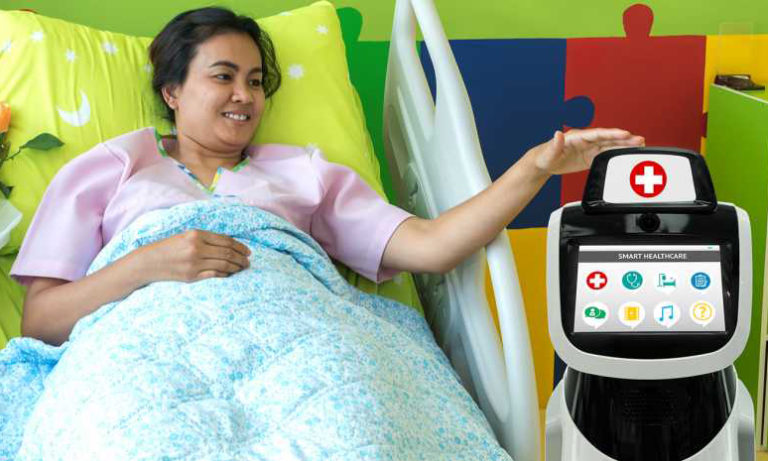Why Can't Exam Rooms Be More Fun?
In big cities, there’s almost a hospital or clinic on every corner, and patients have dozens of options to choose from. That’s why you want your healthcare facility to stand out.

What is your Exam Room like?
Doctors’ exam rooms are often boring places to be. At worst, they resemble a prison cell. While they sit and wait, the patients may try staring at random items in the room or looking at a wall chart or photo over and over again to pass the time. As the time crawls by, patients are left thinking, “Did they forget about me?”
After a long wait, the nurse or doctor shows up and asks a few questions that the patient has likely already answered earlier. By then, all the patient wants to do is GET OUT OF THERE, sometimes not even caring why he or she came to see the doctor in the first place.
Improving Patient Experience
Most exam rooms provide patients with an experience that results in little to no patient engagement. However, recently we tried something new at a healthcare conference, and it kept people engaged. We offered a Kinect 360–driven custom program that invites patient interaction with games and music. The program provides interactive personalized messaging.
Everyone who saw the AI just had to stop and try it out, and each person walked away with a smile on their face. That’s how we know that our easy-to-use program can improve patients’ experience in the exam room. Not only that, it can reduce patients’ anxiety and take their minds off their problem while they wait.

AI Improves Customer Experience and Engagement
Our technology offered an impressive UX disruption at our healthcare conference. People did not expect to have fun, they did. How can technology help you repeat that experience for patients in your office?
- Artificial intelligence (AI) can reduce wait times by setting up optimized exam room allocations for each of the doctors in your office. Doctors and patients can also use the same system to track each other’s location and to communicate. In addition, screening questions and check-ins can be completed interactively as soon as the patient arrives, using our technology to make the entire experience seamless.
- Using AI makes the exam room experience fun! A combination of educational videos and Kinect 360–driven interactions can improve patient engagement. Technology-driven interactions can be used to divert the patient’s attention from the wait and to reduce anxiety.
- The program can take improvements to the next level with unified messaging. From the time patients enter the clinic, unified personalized messaging can be delivered to them on a variety of devices. In the exam room, the Kinect device can also display important information such as the doctor’s arrival time and location, news about recent lab reports, what’s coming next, trending health information, and even personalized wishes and get-well messages.
Based on the feedback we got at the conference, it’s time to break away from the old school customer experience. While the industry is busy making improvements to cost and back office issues, no one else seems to be thinking about how to bring a smile to patients’ faces and how to improve patient experience and retention.
Learn About Our Next Level Healthcare Engineering Products
Your practice can be greatly improved with the use of our products, and your patients will love their new options. Visit our website at http://www.devcool.com/ for further information about our special fusion of technology, design, and patient care.

Sandeep Deokule
Sandeep is the Founder and CEO of Devcool. Founded in 2007, Devcool is focused on helping healthcare companies deliver digital and cloud innovation.
Want to hear more on best practices in healthcare and wellness UX? subscribe to our blog